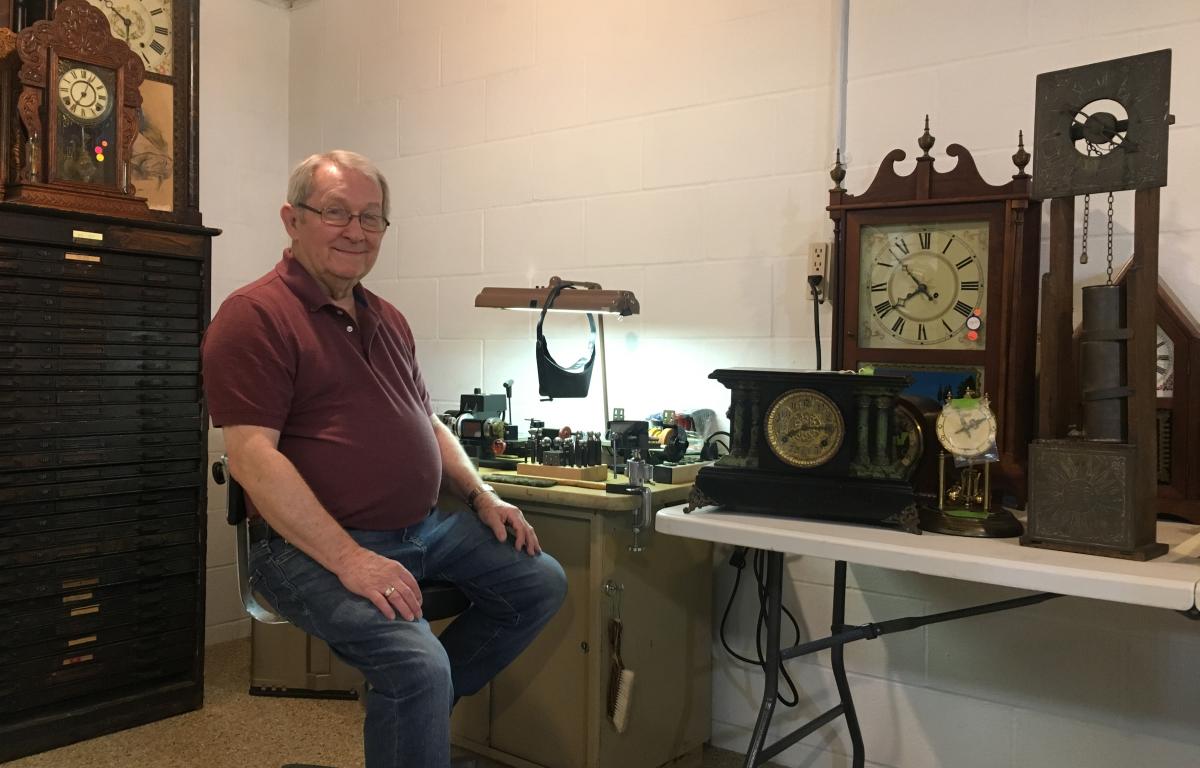GALION — Doug Osborne loves having time on his hands.
For more than 50 years Osborne has been collecting and repairing clocks. Hundreds of centuries-old and modern timepieces. Some are intricately carved of wood, others of heavy cast iron with unique movements and mechanisms. But nearly everyone has a story to tell.
“I guess I’m amazed by the quality of old clocks in a throwaway society,” said Osborne, whose basement workshop is chock-full of ticking timepieces. “But I look at some of them and I’m just in awe of them. They’re not stamped out of plastic.”
Osborne, a self-taught craftsman, first became fascinated with clocks back in 1968 when he inherited one from his grandfather. The Seth Thomas mantle clock, built in 1856, had belonged to his great-great-grandfather who fought in the Civil War, but it didn’t work.
Osborne decided the fix it.
“I restored it and I remember I had it sitting on the fireplace mantel,” Osborne recalled. “I was sitting in a chair and the clock was ticking. I was listening to the very same thing that my great-great-grandfather used to sit in a chair and listen to. Wow!”
That family heirloom became the first of many in Osborne’s impressive collection over the years — carriage clocks from the 19th century and cuckoos crafted in the Black Forest of Germany; parlor clocks, regulators, alarms and anniversaries; grandmothers and grandfathers from two inches to seven feet tall.
If he hasn’t owned one, Osborne has probably fixed it. He finished constructing a grandfather clock for a woman whose husband died in the middle of building it. He removed the hood of another grandfather clock for a customer, only to discover a hidden envelope stuffed with $1,200.
In 2013, Osborne revived a grandfather clock that had been stored in a Richland County barn for more than 300 years. The rotted timepiece — made in St. James, England in 1691 — was about to be tossed on a burn pile until the owner decided at the last minute to save it.
Osborne said the Mansfield woman called him, then showed up at his door carrying boxes of warped wooden parts and pleading for help in restoring it. It took him six months to replace missing pieces, painstakingly remove layers of varnish on the painted surfaces and completely rebuild it. Then he delivered the finished product.
“I took it in and set it in the house and I had to wait 30 minutes for her to stop crying before we could even talk about it, and to think it was almost burned in a bonfire,” Osborne said. “But every clock has something unique about it, especially the old ones.”
Osborne dons a jeweler’s loupe to perform many of the tedious repairs. Tiny jeweler’s tools and other instruments he’s made himself line his well-lit workshop table, while the drawers of an antique cabinet are brimming with dials, pendulums and parts he and his wife, Jerry, have found at auctions and flea markets.
A longtime member of the National Association of Watch and Clock Collectors, Osborne loves to show visitors some of the favorites in his collection, including a Briggs rotary clock made in Concord, NH, in 1855, a 1796 pocket watch still in its original sterling silver case and an array of character watches.
Cuckoos strike the hour as he walks over to admire the workmanship and animation on the weight-driven devices. He’s also quick to point out an Ignatz flying pendulum clock patented in 1883 and a rare English water clock considered to be one of the oldest time-measuring instruments made.
Osborne, who is especially attracted to antique American clocks and the history behind them, said it’s amazing how many treasured timepieces are still out there.
“I don’t even have to scout for them anymore. People just bring them to me,” he said.
That’s because people know what keeps him ticking.
“I’ve always been mechanically inclined. I’ve always had to do something like this. It’s in my make up,” Osborne said. “Doing something to keep something from being destroyed that has value, not necessarily dollar sense, but historical sense.”


